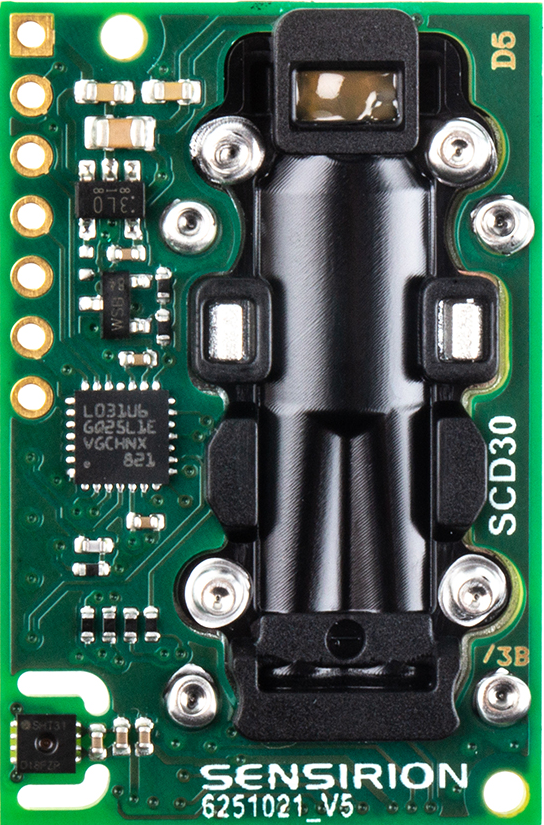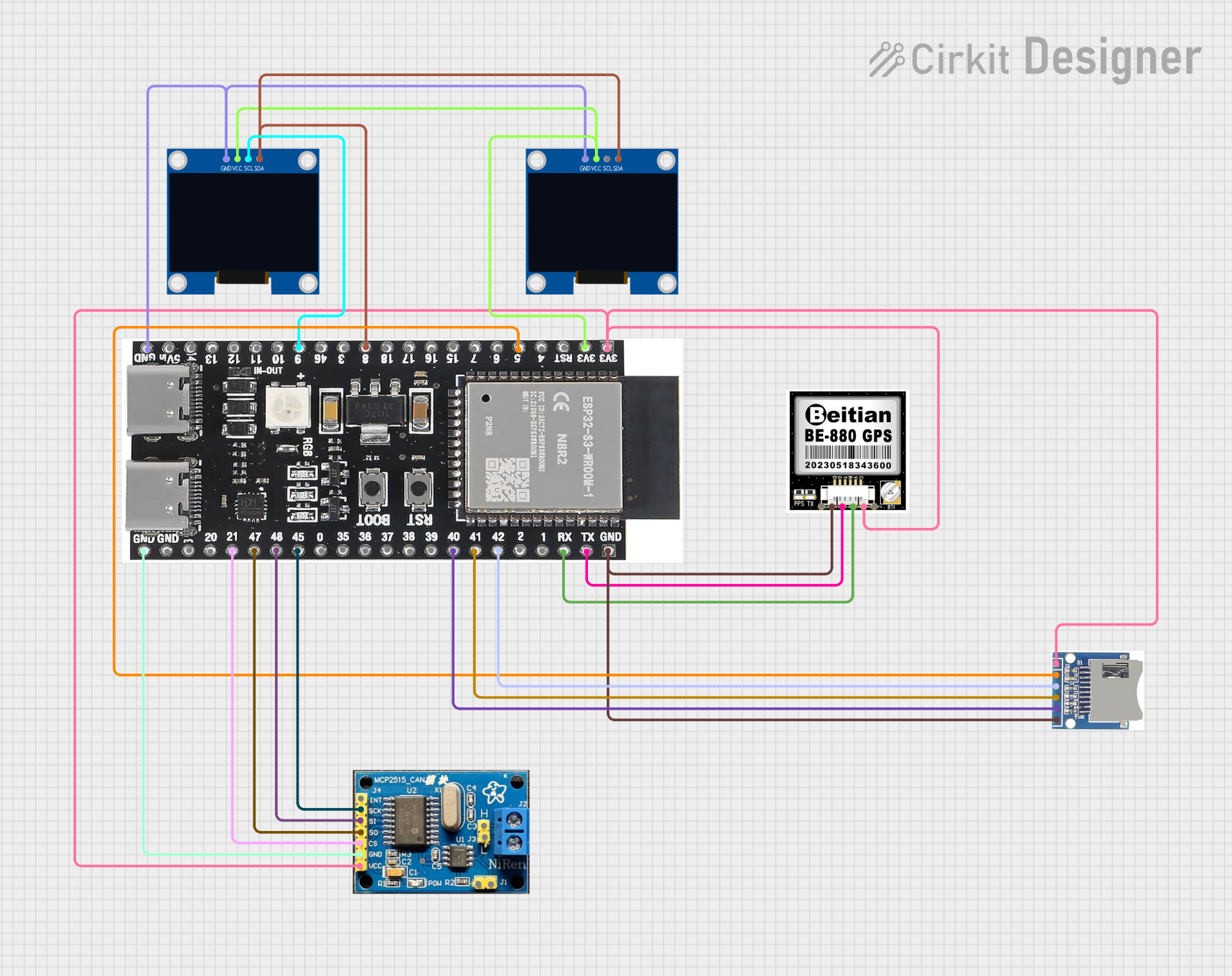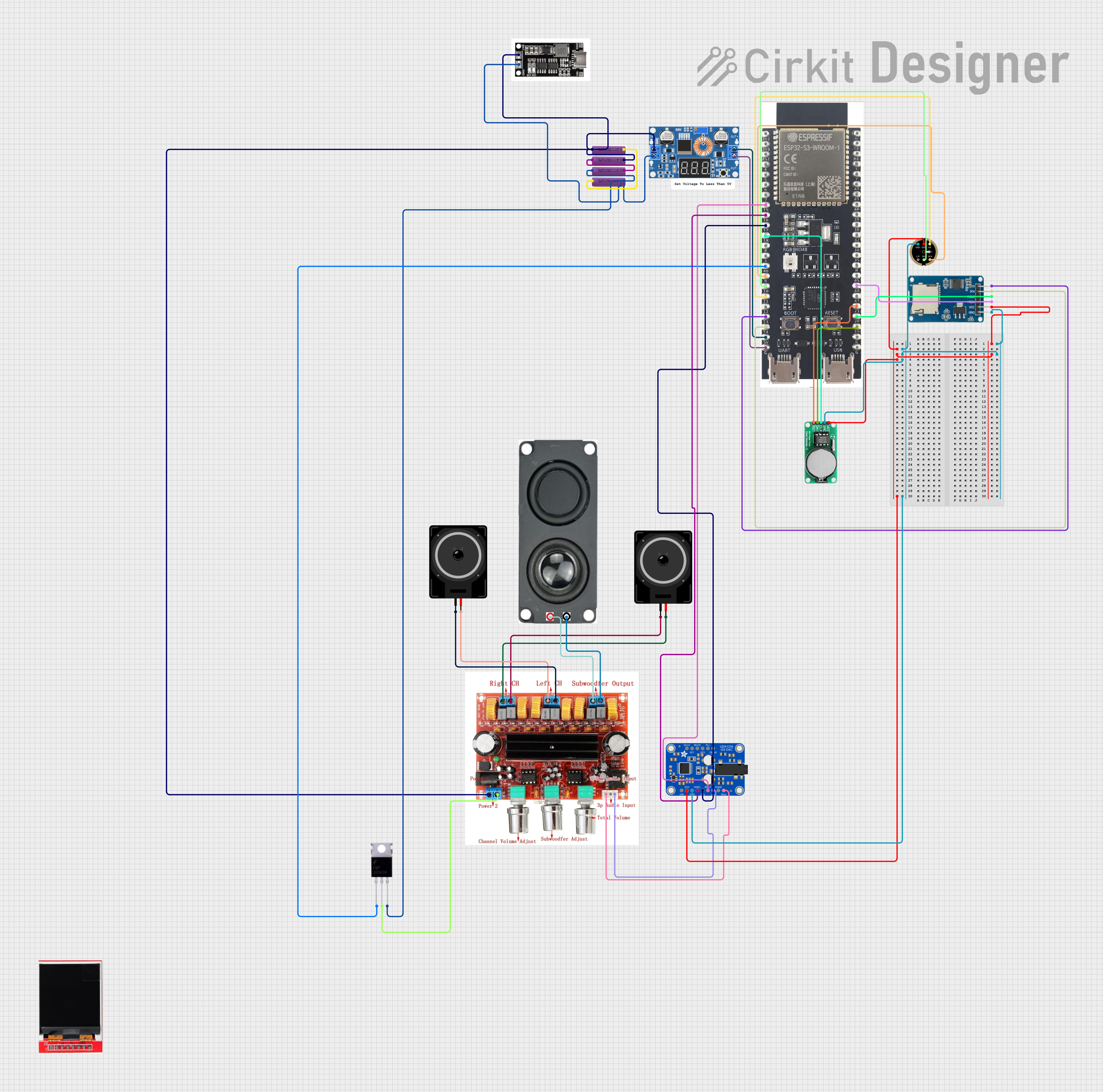
How to Use SCD30: Examples, Pinouts, and Specs

 Design with SCD30 in Cirkit Designer
Design with SCD30 in Cirkit DesignerIntroduction
The SCD30, manufactured by Sensirion, is a high-precision digital sensor designed for measuring carbon dioxide (CO2), temperature, and humidity. It employs non-dispersive infrared (NDIR) technology for CO2 detection, ensuring accurate and reliable measurements. The SCD30 is widely used in applications such as indoor air quality monitoring, HVAC systems, greenhouses, and smart home devices. Its compact design and integrated temperature and humidity sensors make it a versatile solution for environmental sensing.
Explore Projects Built with SCD30

 Open Project in Cirkit Designer
Open Project in Cirkit Designer
 Open Project in Cirkit Designer
Open Project in Cirkit Designer
 Open Project in Cirkit Designer
Open Project in Cirkit Designer
 Open Project in Cirkit Designer
Open Project in Cirkit DesignerExplore Projects Built with SCD30

 Open Project in Cirkit Designer
Open Project in Cirkit Designer
 Open Project in Cirkit Designer
Open Project in Cirkit Designer
 Open Project in Cirkit Designer
Open Project in Cirkit Designer
 Open Project in Cirkit Designer
Open Project in Cirkit DesignerTechnical Specifications
The SCD30 offers robust performance and precise measurements. Below are its key technical details:
General Specifications
| Parameter | Value |
|---|---|
| CO2 Measurement Range | 400 ppm to 10,000 ppm |
| CO2 Accuracy | ±(30 ppm + 3% of reading) |
| Temperature Range | -40°C to +70°C |
| Temperature Accuracy | ±0.3°C |
| Humidity Range | 0% RH to 100% RH |
| Humidity Accuracy | ±3% RH |
| Supply Voltage | 3.3V to 5.5V |
| Power Consumption | 19 mA (average) |
| Communication Interface | I2C and Modbus (via UART) |
| Dimensions | 35 mm x 23 mm x 7 mm |
Pin Configuration
The SCD30 has a 6-pin interface for power and communication. Below is the pinout description:
| Pin Number | Name | Description |
|---|---|---|
| 1 | VDD | Power supply (3.3V to 5.5V) |
| 2 | GND | Ground |
| 3 | SDA | I2C data line |
| 4 | SCL | I2C clock line |
| 5 | RX (TXD) | UART receive line (Modbus communication) |
| 6 | TX (RXD) | UART transmit line (Modbus communication) |
Usage Instructions
The SCD30 can be easily integrated into a circuit for CO2, temperature, and humidity sensing. Below are the steps and best practices for using the sensor:
Connecting the SCD30
- Power Supply: Connect the
VDDpin to a 3.3V or 5V power source and theGNDpin to ground. - I2C Communication:
- Connect the
SDApin to the I2C data line of your microcontroller. - Connect the
SCLpin to the I2C clock line of your microcontroller. - Use pull-up resistors (typically 4.7 kΩ) on the
SDAandSCLlines if not already present.
- Connect the
- UART Communication (Optional):
- Connect the
RXpin to the TX pin of your microcontroller. - Connect the
TXpin to the RX pin of your microcontroller.
- Connect the
Arduino UNO Example Code
Below is an example of how to use the SCD30 with an Arduino UNO via I2C:
#include <Wire.h>
#include <SparkFun_SCD30_Arduino_Library.h> // Include the SCD30 library
SCD30 airSensor; // Create an SCD30 object
void setup() {
Serial.begin(9600); // Initialize serial communication
Wire.begin(); // Initialize I2C communication
if (airSensor.begin() == false) {
Serial.println("SCD30 not detected. Check wiring and try again.");
while (1); // Halt execution if the sensor is not detected
}
}
void loop() {
if (airSensor.dataAvailable()) {
// Read and print CO2, temperature, and humidity values
Serial.print("CO2 (ppm): ");
Serial.println(airSensor.getCO2());
Serial.print("Temperature (°C): ");
Serial.println(airSensor.getTemperature());
Serial.print("Humidity (%): ");
Serial.println(airSensor.getHumidity());
Serial.println(); // Print a blank line for readability
} else {
Serial.println("No data available. Waiting...");
}
delay(2000); // Wait 2 seconds before the next reading
}
Best Practices
- Ensure the sensor is placed in an environment with good airflow for accurate readings.
- Avoid exposing the sensor to high humidity or condensation for prolonged periods.
- Calibrate the sensor periodically for optimal performance, especially in environments with varying CO2 levels.
- Use appropriate pull-up resistors for I2C communication to ensure signal integrity.
Troubleshooting and FAQs
Common Issues and Solutions
Sensor Not Detected:
- Verify the wiring connections, especially the
SDAandSCLlines. - Ensure the correct I2C address (default: 0x61) is being used in your code.
- Check the power supply voltage (3.3V to 5.5V).
- Verify the wiring connections, especially the
Inaccurate Readings:
- Allow the sensor to warm up for at least 15 minutes after powering on.
- Ensure the sensor is not exposed to direct sunlight or heat sources.
- Perform a manual calibration if readings deviate significantly.
No Data Available:
- Confirm that the
dataAvailable()function is being called correctly in the code. - Check for proper pull-up resistors on the I2C lines.
- Confirm that the
FAQs
Q: Can the SCD30 measure CO2 levels below 400 ppm?
A: No, the SCD30 has a minimum CO2 measurement range of 400 ppm.
Q: How often should I calibrate the SCD30?
A: Calibration frequency depends on the application. For most indoor environments, calibration every 6-12 months is sufficient.
Q: Can I use the SCD30 with a 3.3V microcontroller?
A: Yes, the SCD30 is compatible with both 3.3V and 5V systems.
Q: What is the default I2C address of the SCD30?
A: The default I2C address is 0x61.
By following this documentation, you can effectively integrate and use the SCD30 sensor in your projects.